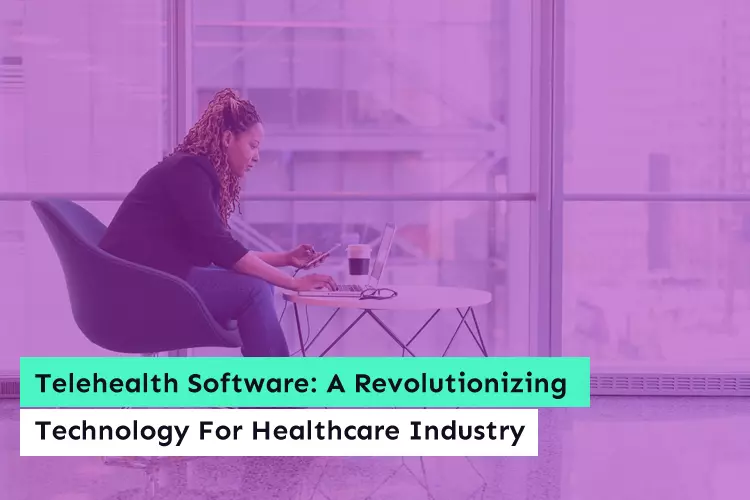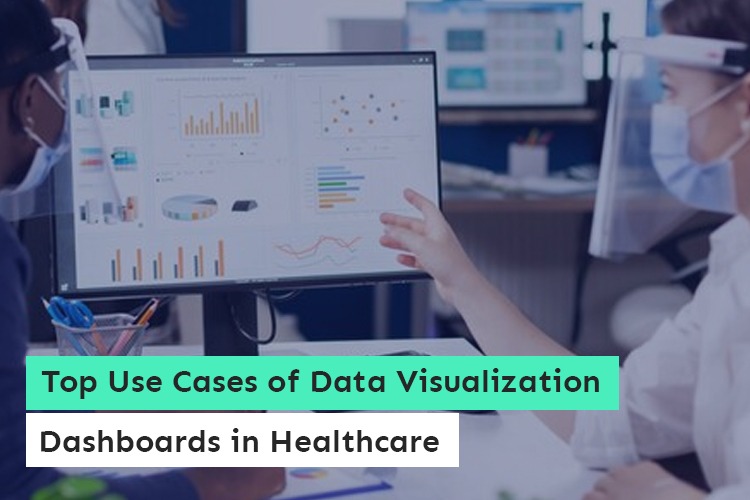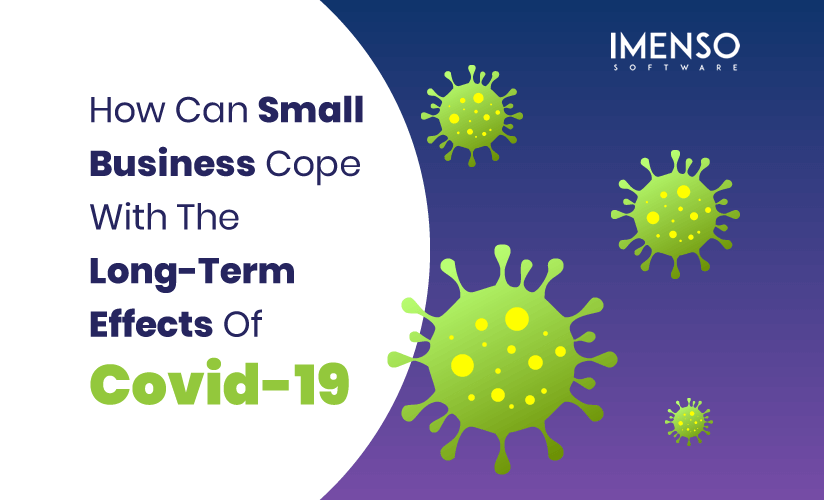Telehealth Development- Transforming the future of healthcare

Telehealth is transforming how we get healthcare, and it is at the forefront of that shift. Telehealth, also known as telemedicine or e-health, is revolutionizing the healthcare industry by using technology to connect patients with medical professionals virtually. With the increasing demand for healthcare services and the limited resources available, telehealth has become an important tool for healthcare providers to deliver quality healthcare to their patients.
The COVID-19 pandemic has brought telehealth to the forefront of healthcare delivery, as it provides a safe and convenient way for patients to receive medical care without leaving their homes. This has led to increased adoption of telehealth services by healthcare providers and patients alike.
Telehealth has several advantages, including better patient outcomes, lower costs, and more widespread access to healthcare services. By leveraging technologies such as video conferencing, remote patient monitoring devices, and mobile apps, telehealth is transforming the way healthcare services are delivered and making healthcare more accessible to patients.
In this blog post, we will explore the benefits of telehealth development, the technologies used in telehealth services, the challenges associated with telehealth development, and how to proceed with the telehealth app development process. Join us as we delve into the world of telehealth and discover how it is transforming the future of healthcare.
Overview of Telehealth:
The use of electronic communication technology to deliver healthcare services and information remotely is referred to as telehealth, also known as telemedicine. This includes the use of video conferencing, phone calls, text messaging, email, and other forms of digital communication to connect healthcare providers with patients.
Telehealth can include a wide range of healthcare services, such as virtual consultations, remote patient monitoring, electronic prescriptions, and remote diagnostic testing. It can be used for routine check-ups, urgent care consultations, mental health services, and even specialist consultations.
Due to its simplicity and low cost, telehealth has become more and more popular recently. It helps healthcare practitioners to access patients in rural or underserved locations, as well as people to obtain healthcare services from the comfort of their own homes. With the ongoing COVID-19 pandemic, telehealth has become even more important as a way to provide healthcare services while minimizing the risk of exposure to the virus.
Telehealth has become increasingly popular due to its convenience, cost-effectiveness, and ability to reduce the need for in-person visits, which is especially important during times of pandemics and other public health emergencies.
Benefits of Telehealth Development:
Telehealth development is changing the landscape of healthcare by providing a multitude of benefits to patients, healthcare providers, and the healthcare industry as a whole. Here are some of the key benefits of telehealth development:

Increased Access to Healthcare Services:
Telehealth development has the potential to increase access to healthcare services for patients, especially those living in remote or underserved areas. With telehealth services, patients can receive medical care without having to leave their homes, which can be particularly beneficial for those with mobility or transportation issues. Telehealth can also help to alleviate the shortage of healthcare providers in certain areas by allowing patients to access specialists and experts from anywhere in the world.
Improved Patient Outcomes:
Telehealth services have been found to enhance the treatment experience by boosting patient involvement and treatment plan compliance. Telehealth enables patients to receive ongoing medical care and monitoring from their healthcare providers, which can lead to better management of chronic conditions and improved medication adherence. Additionally, telehealth services can provide timely interventions and preventative care to patients, reducing the likelihood of hospitalizations or emergency room visits.
Reduced Healthcare Costs:
Telehealth development has the potential to lower healthcare expenses by removing the requirement for patients to go to medical facilities, which may be expensive and time demanding. Telehealth services can also reduce the cost of hospital readmissions and emergency room visits by providing timely and appropriate medical care to patients, which can prevent the need for more costly interventions down the line. Also, by enhancing health satisfaction and minimizing the need for more expensive therapies, telemedicine can save healthcare expenditures.
Flexibility and Convenience:
Telehealth services are flexible and practical since they allow patients to obtain medical care without leaving the comfort of their homes and without having to drive to a facility. This is especially important for individuals who may have difficulty traveling to a healthcare facility, such as those with mobility issues, busy schedules, or living in remote or rural areas.
Telehealth apps also provide a more flexible schedule, as patients can schedule appointments at a time that works best for them. This convenience can improve patient satisfaction and engagement, and may even encourage individuals to seek out healthcare services who may have otherwise not done so.
Improved Patient Satisfaction:
Telehealth services have been shown to increase patient satisfaction by providing patients with personalized and timely medical care. Patients appreciate the convenience of telehealth services and the ability to communicate with their healthcare providers from the comfort of their own homes. Telehealth can also improve patient satisfaction by providing patients with access to a wider range of healthcare services and specialists.
Key Technologies Used in Telehealth Development:
Telehealth development relies on a variety of technologies to enable remote medical care and communication between patients and healthcare providers. Here are some of the key technologies used in telehealth development:
Telecommunications Networks:
Telecommunications networks are a fundamental component of telehealth development. These networks enable real-time communication between patients and healthcare professionals via encrypted texting, phone conversations, or video conferencing. Telecommunications networks must be reliable and high-speed to ensure seamless communication between patients and healthcare providers. Additionally, telecommunication technologies need to be adaptable to different devices and operating systems to accommodate a wide range of patients.
Electronic Health Records (EHRs):
Digital records of a patient’s medical history, including diagnoses, prescriptions, and test results, are known as electronic health records (EHRs). EHRs are a critical component of telehealth development as they allow healthcare providers to access and share patient information remotely. When a patient needs immediate medical care but is unable to see their medical data in person, this can be especially helpful.

EHRs must be secure and compliant with privacy regulations to protect patients’ sensitive medical information. Standardization of EHRs across different healthcare providers can also help in streamlining the process of sharing medical records between different healthcare systems.
Remote Monitoring Devices:
Remote monitoring devices, such as blood pressure monitors, glucose meters, and wearable devices, allow patients to monitor their health at home and transmit data to healthcare providers. These devices can provide valuable information to healthcare providers, enabling them to monitor patients’ health and detect potential issues before they become more serious. Technologies for remote monitoring have the potential to significantly increase patient diagnostic and treatment accuracy and speed while lowering the requirement for in-person visits to healthcare institutions.
Artificial Intelligence (AI) and Machine Learning (ML):
Emerging technologies like AI and ML have the power to completely change how telemedicine is developed. These technologies can analyze vast amounts of patient data and identify patterns and trends, allowing healthcare providers to make more accurate diagnoses and provide more personalized medical care. For example, AI and ML can be used to identify patients who are at risk of developing a certain disease and provide preventative care, or to assist in medical image analysis for faster diagnosis.
Mobile Applications (Apps):
Mobile applications, or apps, are becoming an increasingly popular tool in telehealth development. These apps allow patients to access medical care, schedule appointments and communicate with healthcare providers from their smartphones or tablets. Apps must be user-friendly and secure to ensure patient privacy and protect sensitive medical information. Additionally, apps can be developed to specifically cater to the needs of different patient groups such as those with chronic diseases or disabilities.
What are the Challenges Associated with Telehealth App Development?
The development of telehealth apps comes with several unique challenges:
Regulatory Compliance:
To guarantee the security and privacy of patient data, telehealth applications must adhere to several laws and regulations, including the General Data Protection Regulation (GDPR) and the Health Insurance Portability and Accountability Act (HIPAA). Developers need to understand the legal requirements and ensure that the app meets regulatory standards. This includes implementing proper security measures and obtaining the necessary certifications.
User Experience:
Telehealth apps need to be user-friendly and intuitive to ensure patients can use them easily, even if they have limited technical knowledge. Developers need to consider the user interface, navigation, and accessibility to ensure that the app is easy to use and navigate. It is also essential to ensure that the app is available in multiple languages to cater to diverse populations.
Technical Compatibility:
Telehealth apps need to work seamlessly across different devices and platforms, such as iOS, Android, and web browsers, to ensure that patients can access them easily. The app’s compatibility with various screen sizes and operating systems must be ensured by the developers. They also need to ensure that the app works well with different internet connections, including 3G, 4G, 5G, and Wi-Fi.
Integration with EHR Systems:
Telehealth apps need to integrate with electronic health record (EHR) systems to ensure that physicians can access patient data and provide accurate diagnoses and treatment plans. Developers need to ensure that the app can integrate with different EHR systems and that patient data is synced securely between the app and the EHR system.
Connectivity and Reliability:
Telehealth apps require a stable and reliable internet connection to ensure that patients can access them and that the quality of video and audio calls is high. Developers need to ensure that the app is designed to work in areas with poor internet connectivity and that the app can handle fluctuations in bandwidth.
Security:
To safeguard patient data from online threats and hacking efforts, telehealth applications must employ strong encryption mechanisms. Developers need to ensure that the app follows industry-standard security practices, such as encrypting data in transit and at rest, using two-factor authentication, and implementing secure authentication protocols.
Medical Expertise:
The development team needs to have a good understanding of medical practices and terminology to develop a telehealth app that is useful for healthcare providers and patients. Developers need to work closely with medical professionals to ensure that the app meets the needs of healthcare providers and that it is designed to support clinical workflows. They also need to ensure that the app is compliant with medical regulations and that it does not compromise patient safety or privacy.
How to Proceed with Telehealth App Development?
If you want to get the Telehealth app development experience choose a top software development company like Imenso Software. The experts at Imenso software use the best practices for the projects. Here are the general steps to follow when proceeding with telehealth app development:
Step 1. Define the scope and requirements:
Determine the scope of the telehealth app and the requirements needed to meet the intended purpose. Identify the features and functionality that the app should have, as well as the target audience and the healthcare services the app will provide.
Step 2. Choose a development team:
Choose a development team that has experience in developing healthcare apps and can meet the requirements of the project. Ensure that the team has expertise in developing telehealth apps and is familiar with the relevant regulations and guidelines.
Step 3. Develop a prototype:
Develop a prototype to test the features and functionality of the app. This can be done using wireframes, mockups, or a working prototype that can be tested by a small group of users.
Step 4. Develop the app:
Once the prototype is tested and approved, the development team can start building the app. This involves coding the app, integrating necessary APIs, and building the app’s back-end infrastructure.
Step 5. Test the app:
After the app is developed, it should be thoroughly tested to ensure that it meets the requirements and functions as intended. This includes testing for usability, security, and performance.
Step 6. Launch the app:
Once the app is tested and approved, it can be launched on the app store or a healthcare organization’s website. Ensure that the app meets all necessary regulatory and compliance requirements.
Step 7. Maintain and update the app:
Telehealth apps should be maintained and updated regularly to ensure that they continue to function as intended, address any security or usability issues, and incorporate new features and functionality as needed.
Developing a telehealth app requires a collaborative effort between the development team, healthcare providers, and other stakeholders. By following these steps and working closely with all involved parties, a successful telehealth app can be developed that meets the needs of both patients and healthcare providers.
Wrapping it Up:
In summary, telehealth development is transforming the future of healthcare by providing increased access to healthcare services, improving patient outcomes, reducing healthcare costs, offering flexibility and convenience, and improving patient satisfaction. The benefits of telehealth are numerous, and telehealth services are quickly becoming an essential part of healthcare delivery. As technology continues to advance, we can expect telehealth to become an even more critical component of healthcare in the future. Get in touch with the experts at Imenso Software to get a free estimate on your project!
Similar Posts

Telehealth Software: A Revolutionizing Technology For Healthcare Industry
The relationship between healthcare and technology always has an active status. But the immediate demands and uncontrollable situations of coronavirus pandemic deepen the bond towards a more permanent status. ...

Top Use Cases of Data Visualization Dashboards in Healthcare
The human eye is naturally drawn to pictures more than text lists. Therefore, it is not an exaggeration to claim that data science visualizations in healthcare are essential for saving lives. The healthcare sector is being shaken up by big data. Simply put, data visualization is the practice of displaying data graphically, such as through […]...

How Can Small Business Cope With The Long-Term Effects Of Covid-19?
The Covid-19 crisis has been disruptive for many businesses, but the SMBs have had the major burn of all. There has been some relief in 2021 as the vaccines are here, and the lockdown has been removed. But things are still far from ordinary. And according to experts, it can be until august 2021 to […]...










